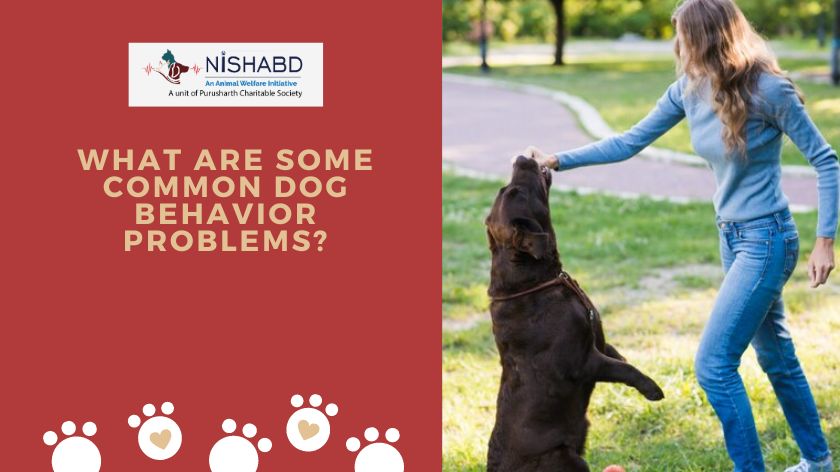What are some common dog behavior problems?
Although dogs are known for their loyalty and affection, they can also show strange behaviors. Understanding and addressing common behavioral issues are crucial to maintaining a healthy and happy relationship with our furry companions.
We will explore the most common behavioral issues in dogs, and provide practical advice for how to handle them using dog training techniques. Separation anxiety is a major concern for pet owners. We will discuss how to handle it.
- Barking excessively
Excessive barking is one of the biggest problems dog owners have to deal with. Dogs can bark for many reasons: boredom, fear or attention seeking. They may also be alerting their owners to potential threats. Barking is a normal behavior in dogs. However, excessive barking can be a nuisance.
Solution:
- Dog Training: Teach your dog to obey the command “quiet”. This is a great way to control excessive barking. Begin by letting your pet bark for a few seconds, then say “quiet”, and give them a reward when they stop.
- Address the Cause: Make sure your dog gets the exercise and mental stimulation it needs.
- Training Tool: Use tools such as bark collars and deterrent devices. However, consult a professional trainer before using any of these methods.
- Chewing and destructive behavior
Another common behavior problem is chewing, particularly in puppies. Although chewing is natural, it can be problematic if the dog begins to destroy furniture, shoes or other household items.
Solution:
- Dog Training: Redirect your dog’s chewing behavior by providing appropriate chew toys. Praise them and reward them when they choose to play with their toys instead of your belongings.
- Instruction: Set boundaries by keeping temptations out of reach, and spraying deterrent sprays onto furniture.
- Mental stimulation: Make sure your dog gets enough mental and physical stimulation to avoid chewing due to boredom.
- Jumping on People
A typical problem that many dog owners deal with is their dog jumping up on people. Dogs frequently jump to meet people or want attention, but this can be an unwanted habit, particularly if it’s directed at small children or guests.
Solution:
- Dog Training: Train your dog not to jump when you greet people. Only pay attention to the dog if they are calm. Your dog will learn that jumping does not get attention.
- Consistency: Everyone should follow the same rules to avoid confusing your dog.
- Separation Anxiety
A dog’s separation anxiety can be characterized by excessive barking and destructive behavior.
Solution:
- Gradual desensitization: Start with short periods of time and increase them gradually. It helps your dog become accustomed to being left alone.
- Dog Training: To reduce anxiety, avoid making arrivals and departures a major event.
- Consistency: Stick to the same routine when you leave and return home. Your dog will learn that you always come back.
- Aggression
Dogs can display aggression toward other dogs or people. This can be a result of fear, territoriality or frustration.
Solution:
- Dog training: Professional dog training is essential for managing aggressive behavior. An experienced dog behaviorist will help you identify the root causes of aggression and create a customized training plan.
- Avoid Punishment: Use positive reinforcement to redirect your dog’s focus and encourage more appropriate behavior.
- Sociation: Expose your dog in a controlled, positive way to new people, dogs, and environments to reduce fear-based aggressive behavior.
- Digging
Dogs are naturally inclined to dig, but this behavior can be problematic if it is excessive or done in an inappropriate area, like your garden.
Solution:
- Dog Training: Give your dog a designated area to dig in. Reward him for doing so.
- Exercise: Exercise your dog to avoid boredom-induced digging.
- Deterrents: Use natural barriers like chicken wire or landscaping fabrics to prevent digging.
- Resource Protection
A dog may become defensive when it comes to food, toys or other valuable items. The behavior can result in aggression or conflict with other animals or people.
Solution:
- Dog Training: Teach your dog that you are present around his resources and he will associate it with positive feelings. Offer high-value treats to your dog as a reward when they allow you near their bowl.
- Avoid Confrontation: Do not confront your dog if he is guarding. Use positive reinforcement instead to encourage calm and sharing behavior.
- Inappropriate Elimination
Urinating or defecating inside the home can be due to a number of reasons, such as medical conditions, anxiety or lack of training.
Solution:
- Dog Training: Reinforce house-training by taking your dog out regularly. Positive reinforcement and consistent routines are essential.
- Medical check-up: Consult a veterinarian if you are experiencing inappropriate elimination.
- Thoroughly clean up: Use enzyme cleaners to remove feces or urine smells that can encourage your dog to eliminate at the same place.
- Fearfulness
A dog that is afraid may show aggressive or trembling behavior when faced with certain stimuli.
Solution:
- Dog Training: Desensitization techniques and counterconditioning are used to expose your dog in a controlled, positive way to stimuli that cause fear.
- Reinforcement: Reward calm behavior, and increase exposure intensity gradually to build confidence.
- Safe space: Create a place where your dog feels safe and secure. It will reduce anxiety.
- Separation Anxiety
Separation anxiety can cause dogs to become anxious and destructive when left alone. They may also bark excessively or try to escape.
Solution:
- Dog training: Implement a routine when leaving and returning to your home. Reward calm behavior by rewarding the dog with positive reinforcement.
- Gradual departure training: Practice letting your dog be alone for short periods of time and gradually increase their duration. This will help them become accustomed to being alone.
- Interactive toys: Offer engaging toys and puzzle feeders for your dog to keep them occupied while you are away.
Conclusion
Maintaining a good relationship with your dog requires being aware of and responsive to typical behavioral problems in dogs.
Recall that the secrets of successful dog training are persistence, patience, and positive reinforcement. Through appropriate management of these typical behavioral problems, you can contribute to the maintenance of a contented, well-mannered dog.

